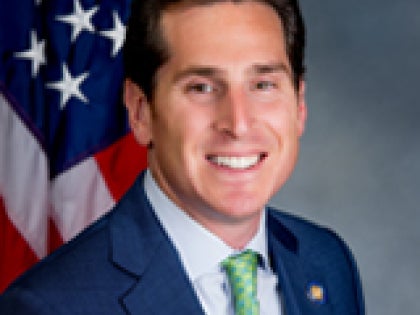
There are billions in aid for LI schools in Hochul's budget plan. Here's the breakdown.
State funding aid for Long Island schools would top $4 billion in the 2022-23 academic year, as Albany continues its push to provide quality education and pandemic relief in the region and statewide.
A Newsday analysis of Gov. Kathy Hochul's state budget proposal finds that the 124 school districts in Nassau and Suffolk counties would be due a hike in state aid exceeding $400 million, or 12%, for the second year in a row. The extra payments are part of a three-year plan intended to provide full state funding for all school systems, even the poorest, by 2023-24.
"When it comes to total dollars, it's significant and welcome," said Lorraine Deller, executive director of the Nassau-Suffolk School Boards Association, in reference to the governor's plan for school aid to the Island.
Deller remarked on the contrast between the current financial outlook, when the state is building budget surpluses, compared to a year ago when there were threats that school aid might have to be cut.
"There is no other way to put it, other than that this is generous, given the dire picture that we were facing in January," the school boards leader said.
Tonie McDonald, superintendent of the 7,200-student Levittown district, welcomed the state's announcement that her system could receive an extra $5.2 million next year, a raise of 8.56%.
"It's very encouraging," said McDonald, who added that Levittown was still checking its records to determine how much of the increase was simply due to enrollment growth and how much represented actual extra funding. McDonald also serves as president of the Nassau County Council of School Superintendents.
Proposed funding increases vary widely from district to district, under a "foundation" aid formula that gives extra weight to schools with large numbers of students who live in poverty or face other disadvantages. All districts would receive foundation-aid increases of at least 3% under Hochul's proposal, but many systems would be due increases exceeding 20%.
Examples of districts assigned big overall aid increases include East Williston, 32.6%; Glen Cove, 28.3%; Lynbrook, 25.7%; Bay Shore, 21.15%; South Huntington, 26.37%; and Wyandanch, 20.18%.
On the other hand, Long Beach's aid would grow only by 1.88%; Island Park's by 2.64%; and North Bellmore, 3.1%. Other districts with small increases are Smithtown, 1.83%; Sachem, 2.21%; and Three Village, 3.36%.
State assistance depends on a variety of factors, including the amounts districts spend on specific programs and services such as student busing and school construction that are reimbursed by Albany. The ultimate amount of money going to each system is to be decided around April 1, when state lawmakers adopt a final budget.
"We'll need to make sure that … no district will be left behind," said State Sen.Todd Kaminsky (D-Long Beach), who was interviewed Wednesday by phone.
Kaminsky reiterated that legislators and the governor remain committed to providing all New Yorkers with a "first-rate" education.
Long Island, as a region, appears to do relatively well in the statewide aid projections posted late Tuesday by the state Division of the Budget. Newsday's analysis found that Nassau's public schools would receive an overall increase of nearly 16%; Suffolk's, 10%; and the state as a whole, 7.2%.
Many taxpayer advocates question whether the Island's position is strengthened by spending more money on schools during a period when enrollments generally are declining.
"Don't we need less money, not more?" said Andrea Vecchio, a longtime tax activist in East Islip. She emailed her comment to Newsday on Wednesday, in response to a headline noting the $4 billion aid figure.
Hochul, in Tuesday's budget message, committed the state to building up financial reserves to a level equivalent to 15% of operating expenses. The idea is to cushion the state against the possibility of a future economic downturn by setting aside part of the money now being generated by unexpectedly high tax revenues.
"This is a once-in-a-generation opportunity to make thoughtful, purpose-driven investments in our state and in our people that will pay dividends for decades," Hochul said.
Many educational leaders agree. Robert Lowry, deputy director of the New York State Council of School Superintendents, said his group was encouraged both by the governor's plan and the state's long-term fiscal outlook.
"That could support more stability in school funding in years to come," Lowry said.
Educators added that state authorities should extend the same opportunity to school districts, by changing a state law that now restricts districts to reserves equivalent to just 4% of expenses.
"What we are calling for is that schools must be allowed to pursue the same strategy," said Deller, of the Nassau-Suffolk boards association.
